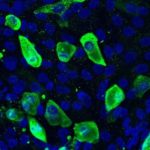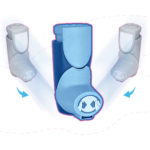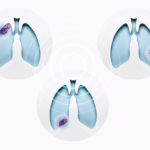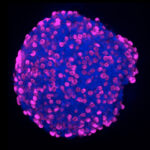A respiratory model of COVID-19, made from patients’ own cells
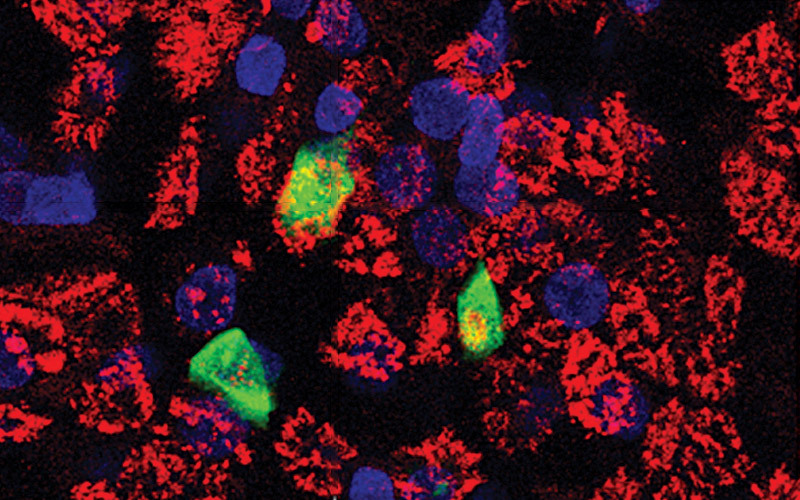
What happens in our respiratory tract once COVID-19 invades? A three-dimensional airway model, made from patient-derived stem cells, could provide answers about the initial stages of infection. The model not only replicates the infection process, but can be used to test potential antiviral drugs.
Ruby Wang, MD, attending physician in Boston Children’s Division of Pulmonary Medicine, led the research in collaboration with the Center for Regenerative Medicine of Boston University (BU) and Boston Medical Center and BU’s National Emerging Infectious Disease Laboratories (NEIDL).
“Human primary bronchial cells are the gold standard for studying lower respiratory infections,” says Wang. “But the value of our model is that it doesn’t require getting tissue from patients’ airways, an invasive procedure. Our platform provides an inexhaustible supply of cells for modeling purposes and produces the relevant airway cell types.”
From blood cells to a model airway
To build the model, Wang and BU colleagues Finn Hawkins, MB, BCh, and Darrell Kotton, MD, obtained blood cells from two individuals. They first genetically “reprogrammed” the cells back to a stem cell state, together with Thorsten Schlaeger, PhD, and George Daley, MD, PhD, from Boston Children’s Stem Cell Program. They then added factors to get the stem cells to form all the major types of epithelial cells that line the trachea and bronchi. These included multi-ciliated, secretory, and basal cells. The model airway carried the hallmark cell receptor ACE2 as well as TMPRSS2, a key enzyme that aids in viral entry.
Using live SARS-CoV-2 in BU’s Biosafety Level 3 facility, Wang’s group and NEIDL researchers Adam Hume, PhD, and Elke Muhlberger, PhD, successfully infected the model airway. They showed that multi-ciliated airway cells are the initial point of viral entry.
“That’s important, because ciliated cells help propel airway mucus and entrapped pathogens up away from the lungs,” says Wang. “If the ciliated cells are injured, the virus can more easily get down to the lower lung.”
Modeling SARS-CoV-2 infection, testing treatments
Once infected, the model airway mounted a robust antiviral response, producing type 1 and type 3 interferons. The team also saw a marked inflammatory response. They observed increased production of inflammatory signaling molecules and increased expression of genes stimulated by interferon (natural antivirals that rally the immune response), and genes involved in activating immune cells.
Because the model airway genetically matches the patient from whom it’s derived, it enables testing of how specific underlying conditions may affect susceptibility to COVID-19.
“We can also use CRISPR gene editing to see the effects of different genetic mutations,” says Wang. She, Stuart Rollins, MD, and other members of her lab are currently using stem cells from cystic fibrosis (CF) patients to study how a CF airway responds to SARS-CoV-2 and other pathogens.
Perhaps most importantly, scientists can use the model to test potential treatments. The team tested the antiviral remdesivir and found a decrease in viral replication. They found the same when they tested camostat mesylate, which inhibits TMPRSS2, confirming that the virus requires TMPRSS2 to infect airway cells.
The team’s findings appear in the journal American Journal of Physiology – Lung Cellular and Molecular Physiology. In the future, Wang plans to use the airway model to study Omicron, Delta, and other new variants and their response to treatments in both healthy patients and those with airway diseases such as CF.
Learn more about COVID-19 research at Boston Children’s and the Division of Pulmonary Medicine.
Related Posts :
-

How do patients with cystic fibrosis respond to COVID-19? An 'airway in a dish' may give answers
So far, based on clinical data, patients with cystic fibrosis (CF) don’t appear to be especially susceptible to COVID-19. ...
-

SMART: A new approach to asthma management
Until recently, the typical approach to asthma involved two inhalers. In its first update since 2007, the National Asthma Education and ...
-

Lung 'organoids' capture early-stage lung cancer; could help test treatments
Lung cancer, the leading cancer killer in the U.S., is often missed in its earlier stages. And while recent ...
-

Can we harness intestinal cells to treat endocrine disorders?
Enteroendocrine cells punch above their weight. Comprising just about 1 percent of intestinal cells, they produce, as a group, around 15 different ...


